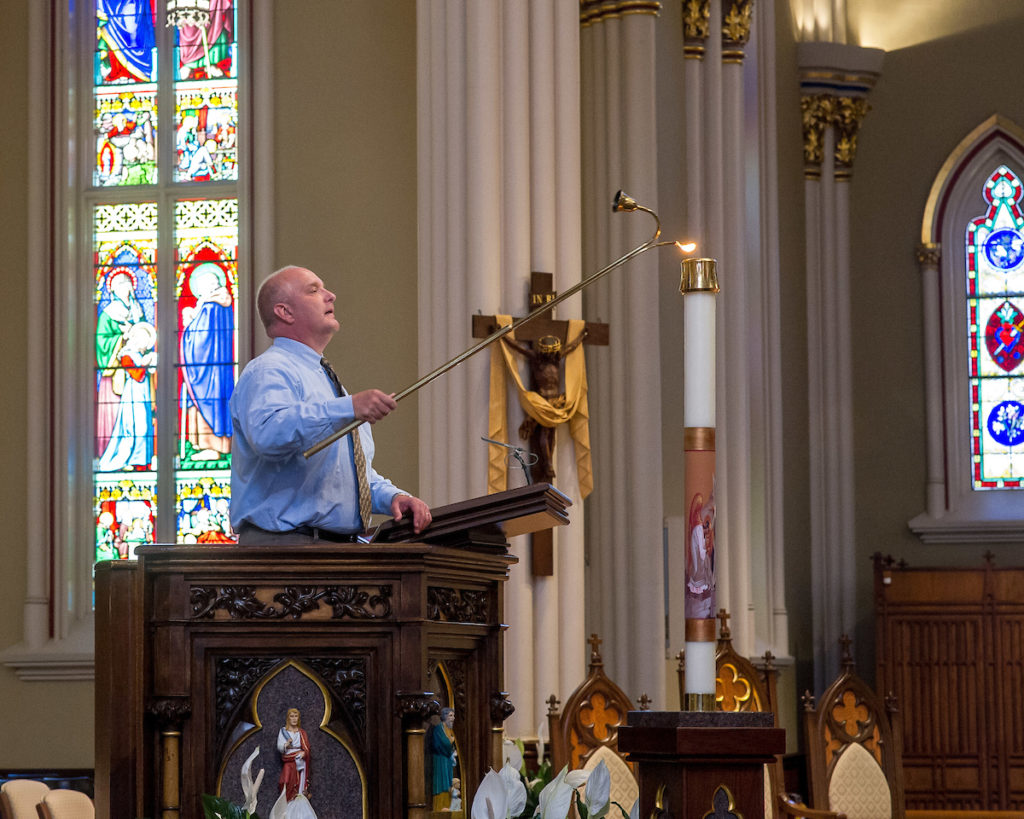John Zack, University Sacristan
“What do you do at Notre Dame?” This is the question I am asked the most when people find out I work at Notre Dame. I would try to explain to them what I do, but every explanation that I would come up with was lacking. I would list my duties, and try to explain what they entailed but this was met with puzzled looks and many, many follow up questions. I’ve tried over the years to simplify my answer as best I could, sometimes just giving the definition of a sacristan right out of the Merriam – Webster dictionary, “a person in charge of the sacristy and ceremonial equipment.” This approach didn’t work and nothing I could come up with seemed to adequately describe what I do at Notre Dame.
Even now, after thirty-one years of being a sacristan at the Basilica of the Sacred Heart, I still think about how to explain my job to someone. I’ve begun to think about a different point of view to explain what I do, a personal point of view. Not just the description on a job posting. What do I think I do at Notre Dame? How do I answer this question when asked of myself?

I unknowingly began to answer this question for myself three years ago while on a pilgrimage to France. Throughout the pilgrimage, we visited churches large and small from LeMans to Paris. A few of the churches we visited were in small, out of the way villages, farming communities. At these small village churches, we were warmly greeted and welcomed by the parishioners. We would visit the church, have Mass with the parishioners and then there would be a reception for us in a parish building, or sometimes in the church itself. Food and drink were offered to us, even though they had never met us. There was very little in the way of verbal communication, they spoke no English and the majority of us spoke little no French, but we did communicate. A smile, a handshake, a polite nod towards the food and drinks, the raising of a glass in thanks and the return acknowledgment. We didn’t have much in common except our mutual faith.
After I returned home from the pilgrimage to France, I saw my work at the Basilica in a new and different way. Besides focusing on the day to day tasks and whatever special service we were having in the Basilica, I started to think about the people coming into the Basilica. I remember how good it made me feel to be welcomed into a strange place. How at home I felt in a foreign place from just a handshake and a smile. Most of the people I see coming into the Basilica are visitors, pilgrims, just like I was in France. My work at the Basilica is a welcoming to these people. The worshipers, the visitors, the pilgrims, everyone should be welcomed and feel welcomed in God’s house.
As I go about my work at the Basilica, I really do enjoy the thought that most of the people I see every day are new to the Basilica and the University. I have the opportunity to impact their visit to the Basilica and the University, for the good.



